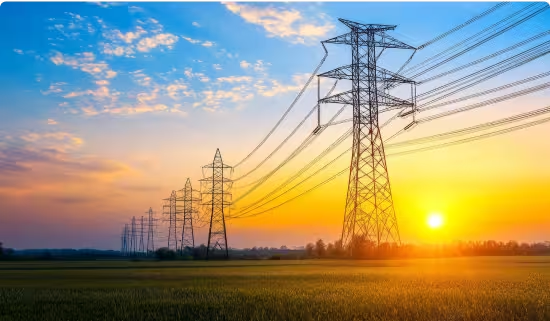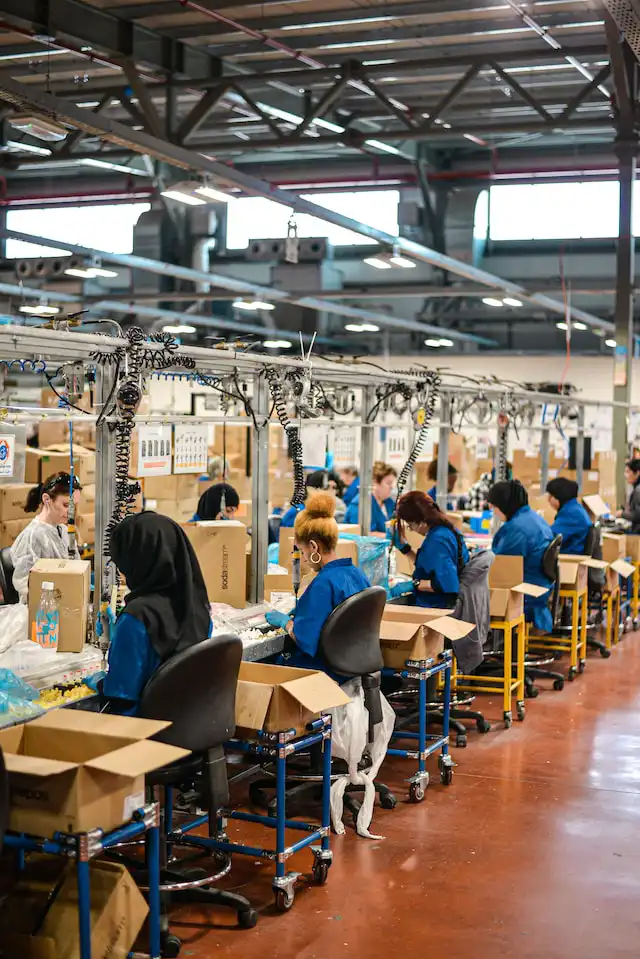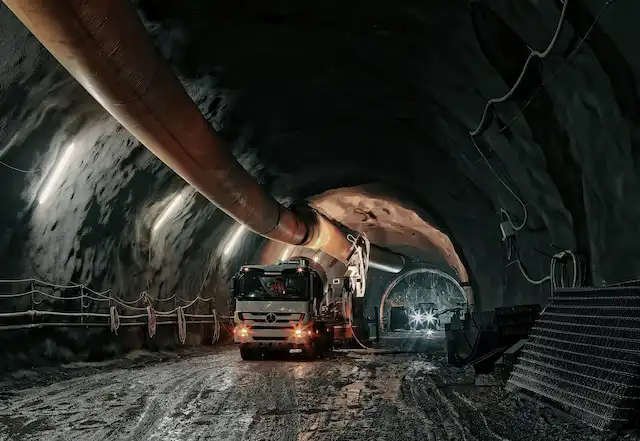
China Shipbuilding Industry Outlook to 2020 - Concentration on Gas Carriers and Cruise Ships to Stimulate China Shipbuilding Industry
Region:Asia
Product Code:KR419
August 2016
125
About the Report
The report titled "China Shipbuilding Industry Outlook to 2020 - Concentration on Gas Carriers and Cruise Ships to Stimulate China Shipbuilding Industry" provides a comprehensive analysis of China . The report focuses on the new shipbuilding and ship-repair industry in China and covers market size and segmentation of overall China Shipbuilding industry by type of ships delivered, by regional manufacturing clusters, by ownership, by customer base, by new orders and repairs. The report covers the market share and detailed company profile of leading players and the failed players. The potential and future outlook for China Shipbuilding Industry has also been discussed in the publication. The report provides detailed analysis of major players, their strategies, SWOT Analysis, Trends & Developments and major issues and challenges with the China Shipbuilding Industry. The report also serves as a benchmark for existing players and every new player who wish to capitalize the market potential and investors who are looking forward to venture into the China Shipbuilding Industry.
China Shipbuilding Industry
Most of the developing world is suffering from an economic slowdown a prolonged weakness in the commodity prices is expected over the next decade. Fluctuations in the commodity prices have a detrimental impact on the Shipbuilding Industry in China. The expectation of low commodity prices means that there will be a readjusting of the current and future fleet of the shipping companies. This directly affects the orders for the new ships that the shipping companies place with the shipbuilders. In 2015, China's Shipbuilding Industry accounted for ~% of the global shipbuilding industry's revenue. China's Shipbuilding Industry was valued at USD ~ billion in 2015 and the value has been declining since 2010 exhibiting a CAGR of ~% from 2010-2015. A mere ~ new order was placed at the Chinese shipyards in 2015. The new orders in China shipbuilding industry witnessed a CAGR of ~% from 2010-2015. This has been in line with the declining orders in the global shipbuilding industry. The major bright spot for the shipbuilding industry is the demand for energy shipping, especially LPG/LNG shipping as more nations are moving away from considering crude oil as the only source of fuel. This will increase the demand for LPG/LNG carriers and the shipbuilding companies in China should focus more on the manufacturing of such carriers instead of focusing on the declining bulk-carrier manufacturing industry.
China Shipbuilding Market Segments
Bulk carriers have accounted for the major share of the shipbuilding activities in China attributable to the commodity boom in the past, for instance, coal and iron ore The government is trying to boost the cruise ship manufacturing in China by tying-up with the leading foreign players for instance, Fincantieri. There has been a transition in the shipbuilding industry in China with the production of dry cargo coming down significantly.
China Ship-repair Industry
China is considered as a low cost ship-repair market in the world. This is mainly because of the lower administrative costs and wages in China. The highest price registered in China is ~% cheaper than the lowest price registered in South Korea. On an average it takes around USD ~ for a general dry bulk cargo ship to get repaired in China whereas the same ship is repaired at more than USD ~ in Japan mainly because of the higher steel prices in Japan. This clearly highlights that ship repair industry in China has the potential to compensate the downturn in the new shipbuilding market.
Competition
The shipbuilding industry in China is dominated by the state-owned companies: China Shipbuilding Industry Corporation (CSIC), China State Shipbuilding Corporation (CSSC), CIMC Raffles, COSCO and China Merchants Industry Holdings Co. Ltd. (CMIH). Out of these five forces, CSIC holds a major share of ~% in 2015 followed by CSSC. Apart from these, some private players are also operating in the China shipbuilding market. But environment for private companies in the China shipbuilding industry has never been as supportive and has become worse in the recent times. Private players captured a minimal ~% share in the total revenues in 2015.
Future Outlook
The future outlook for the Chinese shipbuilding industry is also contingent upon the investments in the infrastructure segment by the countries which are considered as untapped markets by the Chinese maritime analysts for instance, countries in central Africa and Latin America. If these countries do not have the necessary infrastructure required at the ports, the Chinese shipping industry will not have new orders from the owners of ships in such untapped market. The shipyards have to become more technologically advanced so as to attract the next generation of maritime professionals. China is already suffering from a huge industrial and infrastructural overcapacity, high public debts and slower economic growth which could again become a hurdle in the improvement of China Shipbuilding Industry.
Key Topics Covered in the Report
- China Shipbuilding Industry Introduction and Size
- Value Chain Analysis of China shipbuilding Industry
- China Shipbuilding Industry Segmentation By Type of Ships (Gas carriers, Bulk carriers, Dry cargo, Tanker, Container, Passenger and others); By New Ship and Repair Services; By Regional Manufacturing Clusters; By Ownership
- Military Shipbuilding Industry in China Shipbuilding Industry
- Growth Drivers and Trends in China Shipbuilding Industry
- Customer Base for China Shipbuilding Industry
- Ship-Repair Industry Market Size by Revenues and Number of Ships Repaired in China
- Ship-Repair Market Segmentation by Type of Repair Work in China
- Market Share of Major Players in China Shipbuilding Industry
- Company Profile of Leading and Failed Players in China Shipbuilding Industry
- SWOT Analysis of China Shipbuilding Industry
- China Shipbuilding Industry Future Outlook and Projections
- Cost Analysis for Manufacturing of Ships in China Shipbuilding Industry
- Analyst Recommendation
- Macro Economic Variables Impacting the China Shipbuilding Industry
Products
Gas Carriers, Bulk Carriers, Dry Cargo Ships, Tanker Ships, Container Ships, Passenger Ships
Companies
China Shipbuilding Industry Corporation, China State Shipbuilding Corporation, CIMC Raffles Offshore Co. Ltd., COSCO Corporation, China Merchants Industry Holdings
Table of Contents
1. Executive Summary
Market Potential
Trends and Government Role in China Shipbuilding Industry
Strengths for the Chinese Shipbuilding Industry
Not Just Manufacturing but Repairing too!
Major Segments that have Driven Changes in China Shipbuilding Industry
What's Happening in the Chinese Naval Shipbuilding?
Mergers- Consolidation is Underway!
How the Competition is Structured in China Shipbuilding Sector?
Will the Slump Prevail in Future?
Should China Change their Ways And Means to Propel China Shipbuilding Sector?
2. Research Methodology
2.1. Market Definitions
2.2. Abbreviations
2.3. Market Size and Modeling
Consolidated Research Approach
Market Sizing- Shipbuilding Market
Limitations
Variables (Dependent and Independent
Multi Factor based Sensitivity Model
Final Conclusion
3. Value Chain Analysis of China's Shipbuilding Industry
4. China Shipbuilding Industry Market Size, 2010-2015
4.1. By Revenues, 2010-2015
4.2. By New Orders, 2010-2015
4.3. By Number of Completions/Deliveries, 2010-2015
4.4. By Order Book, 2010-2015
4.5. By Merchant Fleet (on the basis of Registrations), 2010-2015
5. China's Shipbuilding Market Segmentation, 2010-2015
5.1. By Ship Type (on the basis of Deliveries), 2010-2015
5.2. By New Ship services and Repair Services, 2010-2015
5.3. By Regional Manufacturing Clusters, 2015
5.4. By Ownership on the Basis of Completions, 2015
6. Snapshot on Chinese Military/Naval Vessels
7. Snapshot on Major Customer Base for China Shipbuilding Sector
8. China Ship Repair Industry Introduction
8.1. China Ship-Repair Market Size By Revenues, 2010-2015
8.1.1. By Number of Ships Repaired, 2010-2015
8.2. Ship-Repair Market Segmentation of China
8.2.1. By Type of Repair Work, 2010-2015
9. Growth Drivers and Trends of the Chinese Shipbuilding Industry
9.1. Domination of Large and High-end Vessels
9.2. Changes in the Structure of the Type of Ships
9.3. Modernized Production
9.4. Consolidation of Shipbuilding Industry in China
9.5. Declining Global Commodity Prices and Freight Rates
Growing Ship Orders above 10,000 TEU
10. SWOT Analysis for China Shipbuilding Industry
11. Merchant Fleets in Global Market by Ship Type on the basis of Age of Vessel
12. Market Share of Major Players in China's Shipbuilding Market, 2015
13. Company Profile for Major Players in China Shipbuilding Market
13.1. China Shipbuilding Industry Corporation
13.2. China State Shipbuilding Corporation
13.3. CIMC Raffles Offshore Co. Ltd
13.4. COSCO Corporation
13.5. China Merchants Industry Holdings Co. Ltd.
14. Major Failure Case Studies in China's Shipbuilding Industry
14.1. Sainty Marine Company
Company Overview
Failure Case Study
14.2. Nantong Mingde Heavy Industry
Company Overview
Failure Case Study
14.3. Zhoushan Wuzhou Ship Repairing & Building Company Ltd
Company Overview
Failure Case Study
15. How Building LNG Fuelled Bulk Carriers can Solve the Plunge in Order Book Problem of the Chinese Shipbuilding Industry?
16. Cost Analysis of Shipbuilding Contract in China
16.1. Introduction
16.2. Cost Structures of the Three Major Shipbuilding Nation
16.3. General Comparison of Shipbuilding Costs for Various Types of Ships in China
16.4. Labor Rates for “48m Fast Patrol Boat” in China
16.5. Pricing Analysis of Chinese Shipbuilding Market
16.6. Estimated Schedule of Shipbuilding in China
16.7. Cost Specification of Chinese Shipbuilding for 48M Fast Patrol
17. China Shipbuilding Market Future Outlook and Projections, 2016-2020
17.1. By Revenues, 2016-2020
17.2. By Segments, 2020
17.2.1. By Ship Type, 2020
17.2.2. By Military Vessels, 2020
17.2.3. By New Ship Services And Repair Services, 2020
17.3. Cause and Effect Relationship Analysis of China Shipbuilding Industry
17.4. Opportunities in China Shipbuilding Market
17.5. Analyst Recommendation
18. Macroeconomic Factors in China's Shipbuilding Industry
18.1. Number of People Employed in China Shipbuilding Industry, 2010-2020
18.2. By Number of Shipyards, 2010-2020
18.3. By Global Sea Borne Trade, 2010-2020
18.4. By Global Losses and Disposals of Ships, 2010-2020
Disclaimer
Contact Us
Why Buy From Us?

What makes us stand out is that our consultants follows Robust, Refine and Result (RRR) methodology. i.e. Robust for clear definitions, approaches and sanity checking, Refine for differentiating respondents facts and opinions and Result for presenting data with story

We have set a benchmark in the industry by offering our clients with syndicated and customized market research reports featuring coverage of entire market as well as meticulous research and analyst insights.

While we don't replace traditional research, we flip the method upside down. Our dual approach of Top Bottom & Bottom Top ensures quality deliverable by not just verifying company fundamentals but also looking at the sector and macroeconomic factors.

With one step in the future, our research team constantly tries to show you the bigger picture. We help with some of the tough questions you may encounter along the way: How is the industry positioned? Best marketing channel? KPI's of competitors? By aligning every element, we help maximize success.

Our report gives you instant access to the answers and sources that other companies might choose to hide. We elaborate each steps of research methodology we have used and showcase you the sample size to earn your trust.

If you need any support, we are here! We pride ourselves on universe strength, data quality, and quick, friendly, and professional service.















